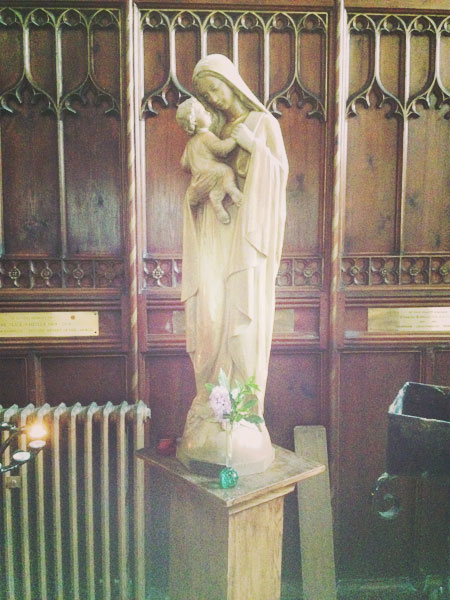The Unknown Soldier
Restoring the Church For All of Us
Make a Donation
Join the Movement
On 11 November 1920, King George V unveiled The Cenotaph in Whitehall. Standing by was a gun-carriage bearing the coffin of the Unknown Warrior which then processed to Westminster Abbey where it was buried in a special tomb – lined with earth from France – at the west end of the Abbey. The stone over the tomb bears this inscription on the right:
BENEATH THIS STONE RESTS THE BODY
OF A BRITISH WARRIOR
UNKNOWN BY NAME OR RANK
BROUGHT FROM FRANCE TO LIE AMONG
THE MOST ILLUSTRIOUS OF THE LAND
AND BURIED HERE ON ARMISTICE DAY
11 NOV: 1920, IN THE PRESENCE OF
HIS MAJESTY KING GEORGE V
HIS MINISTERS OF STATE
THE CHIEFS OF HIS FORCES
AND A VAST CONCOURSE OF THE NATION
THUS ARE COMMEMORATED THE MANY
MULTITUDES WHO DURING THE GREAT
WAR OF 1914-1918 GAVE THE MOST THAT
MAN CAN GIVE LIFE ITSELF
FOR GOD
FOR KING AND COUNTRY
FOR LOVED ONES HOME AND EMPIRE
FOR THE SACRED CAUSE OF JUSTICE AND
THE FREEDOM OF THE WORLD
THEY BURIED HIM AMONG THE KINGS BECAUSE HE
HAD DONE GOOD TOWARD GOD AND TOWARD
HIS HOUSE

Who was he?
The Unknown Warrior was the inspiration of David Railton, a Church of England priest, born in 1884.
The Revd. David Railton lived in Millfield, Folkestone with his family and was a curate at the Parish Church of St Mary & St Eanswythe from 1914 to 1920. In 1916 he had become a temporary chaplain to the Forces and was given leave of absence to serve in France during the war. He was awarded the Military Cross in 1916 for saving an officer and two men under heavy fire.
Writing to his wife Ruby in 1916 he said
“No words can tell you all how I feel, nor can words tell you of the horrors of the clearing of a battlefield. I am certain the shell shock was caused not just by the explosion of a shell nearby, but by the sights and smell and horror of the battlefield in general. I felt dreadful but had to do my best to keep the men up to the task. We were not badly shelled, but when you stand over the body of a man whom you know, and lift the body on to a stretcher and a shell explodes close by, even the bravest men can crack.
Whilst he was serving on the Western Front in 1916 Reverend Railton passed a small garden in Erquingham-Lys, near Armentieres, France. In the corner of the garden was a grave marked by a simple wooden cross. Written on it, in pencil, were the words “An Unknown British Soldier of The Black Watch.
These words moved the Reverend Railton greatly.
He later wrote, “How that grave caused me to think – who was he and who were his parents? What can I do to ease the pain of father, mother, sister, sweetheart, wife and friend?
Reverend Railton first had the idea of arranging for the body of an unknown serviceman to be transported back to England and buried with full honours. Later in the War he wrote to Field Marshal Sir Douglas Haig expressing this idea. He received no response, but felt reluctant to let it go.
In August 1920 – by which time he was vicar of St John the Baptist, Margate – he wrote to Bishop Ryle, the Dean of Westminster, about the possibility of giving an unidentified soldier a national burial service in Westminster Abbey. Ryle took up the idea and with the support of Prime Minister Lloyd George, won over the initially hesitant King George V.
On 11 November 1920, King George V unveiled The Cenotaph in Whitehall. Standing by was a gun-carriage bearing the coffin of the Unknown Warrior which then processed to Westminster Abbey where it was buried in a special tomb – lined with earth from France – at the west end of the Abbey. In St George’s Chapel overlooking the Unknown Warrior hangs the Union Jack or Padre’s Flag, used by the Reverend David Railton as he carried out funeral services in the trenches.
Our Top Priorities
efficient heating
We all know that churches can be cold places due to the scale of the buildings, but it's not much fun to shiver in! The more efficient and cost-effective the heating system, the warmer we'll be.
the tapestry
The church is full of beautiful and intricate tapestries surviving so much through time and our aim is to make sure that survival is continued for many more visitors to enjoy.
The roof
The roof is obviuosly the most important strucure on the building, protecting all inside. We crucially need to complete all necessary repairs to make this 100% watertight.
Fundraising
Our constant. We are always looking for new and innovative ways to raise money. Join us and be part of the proud team looking after just one piece of Folkestone's heritage.
Join Us...
Get Involved
We Folkestonians cannot let neglect succeed in destroying our Church - the focal point of the town and it’s history - where fire and wars have failed. Once the Church has gone it will be gone for good. For the love of Folkestone we need to act now.
Give Today
Get In Touch
who we are
The Friends of St Mary and St Eanswythe Parish Church began on 21st March 2014 and is dedicated to the preservation of St Mary and St Eanswythe’s Church.
REGISTERED CHARITY NUMBER 1161358
what we do
Our sole aim is to raise funds all of which will be devoted to the upkeep of the building and to the furthering of public understanding of its history, architecture and significance.
contact us
E. info@friendsofstmaryandsteanswythe.org.uk

